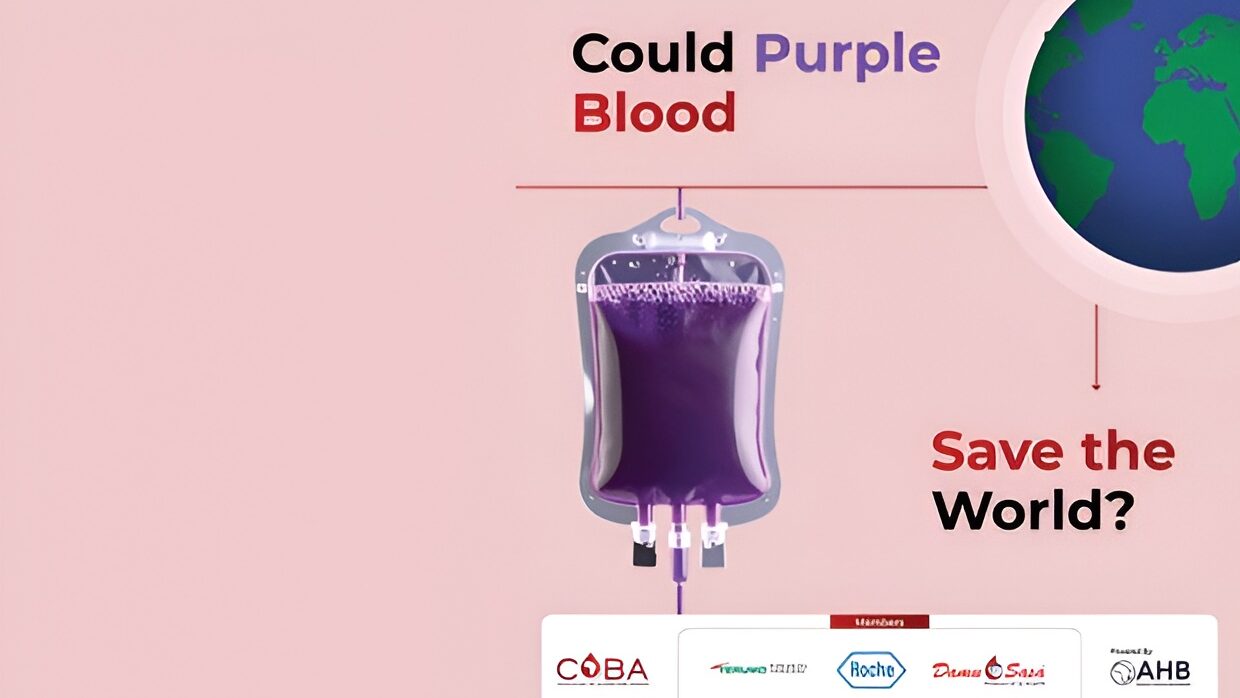
Artificial Blood Breakthrough in Japan: Long Shelf Life, No Type Matching, and a Purple Future
Coalition of Blood for Africa (CoBA) has shared a post on LinkedIn:
“Blood shortages
30-day expiry limits
Type matching chaos
Japan may have just solved all three.
At Nara Medical University, researchers are engineering a breakthrough in transfusion medicine — artificial blood that:
Doesn’t require blood type matching
Lasts up to 2 years (vs. 30 days for regular donations)
Is… purple
How?
Professor Hiromi Sakai and her team have developed a synthetic blood substitute by extracting hemoglobin from expired blood donations and encapsulating it in a virus-proof shell.
No blood type compatibility issues
Converts medical waste into lifesaving supply
Ideal for trauma, surgery, and remote care
Clinical trials are already underway, with human participants receiving 100–400ml doses. If successful, Japan aims for nationwide use by 2030.
Meanwhile, Professor Teruyuki Komatsu at Chuo University is developing artificial oxygen carriers using albumin (a plasma protein) — targeting use in stroke treatment, haemorrhage, and acute pressure crashes.
Why this matters
Global blood supply is often fragile — especially during disasters, pandemics, and in low-resource settings.
Artificial blood could extend shelf life 24x longer than current donations.
Eliminating type-matching delays could revolutionize emergency care.
This is not just scientific progress, it could be the most significant advance in transfusion medicine in decades, with massive implications for maternal health, surgery, battlefield medicine, and disaster response.
The future of blood may not be red.
It may be purple — and always ready when we need it most.”

Discover more on Hemostasis Today.
-
Dec 17, 2025, 15:24Laura Dormer on a Motor Relearning Program for Chronic Stroke Patients
-
Dec 17, 2025, 15:01WSO: United Nations Has Formally Adopted the Political Declaration on NCDs and Mental Health
-
Dec 17, 2025, 14:44Bryan Unger: 1st Patient Has Been Enrolled in NuvOx Therapeutics’ Phase IIb NOVEL Trial
-
Dec 17, 2025, 14:29Sarah Richardson: Feeling So Proud to Be a Part of the Advocacy Team for the HFA
-
Dec 17, 2025, 06:28Wolfgang Miesbach on Linus Völker’s Presentation of Caplacizumab as Frontline Therapy for iTTP
-
Dec 17, 2025, 06:11Lisa Murphy Thanks Stroke Foundation Team for An Impactful, Rewarding and Incredible Year
-
Dec 17, 2025, 06:05Emmanuel J Favaloro Shares A Study on AI and Machine Learning in Thrombosis and Hemostasis
-
Dec 17, 2025, 05:54Michael Bruckman: Fantastic to See Platelet-Inspired Nanoparticles Gaining Attention!
-
Dec 17, 2025, 04:00Peter Verhamme on Genetic Predisposition to Thromboembolism and COVID
